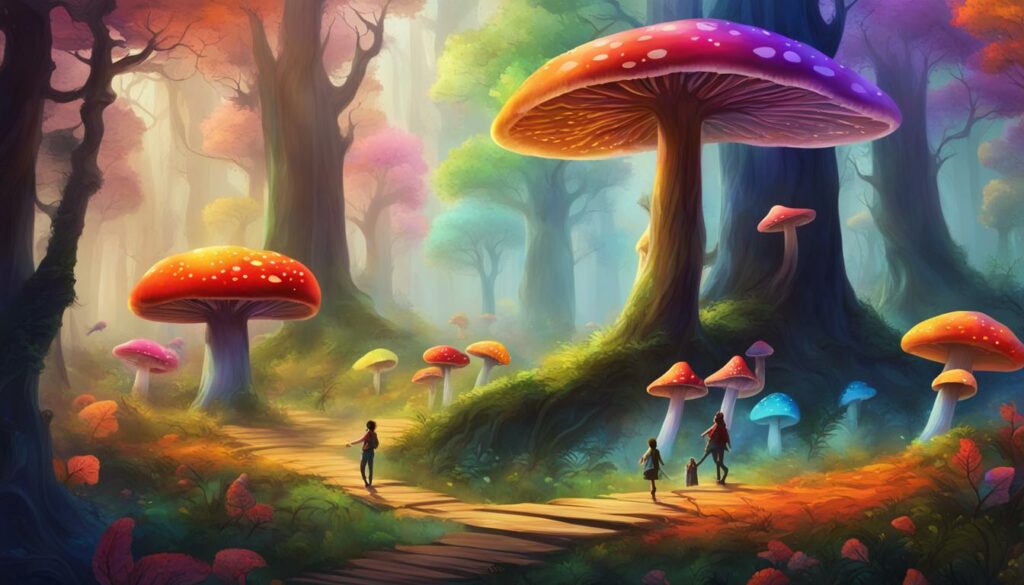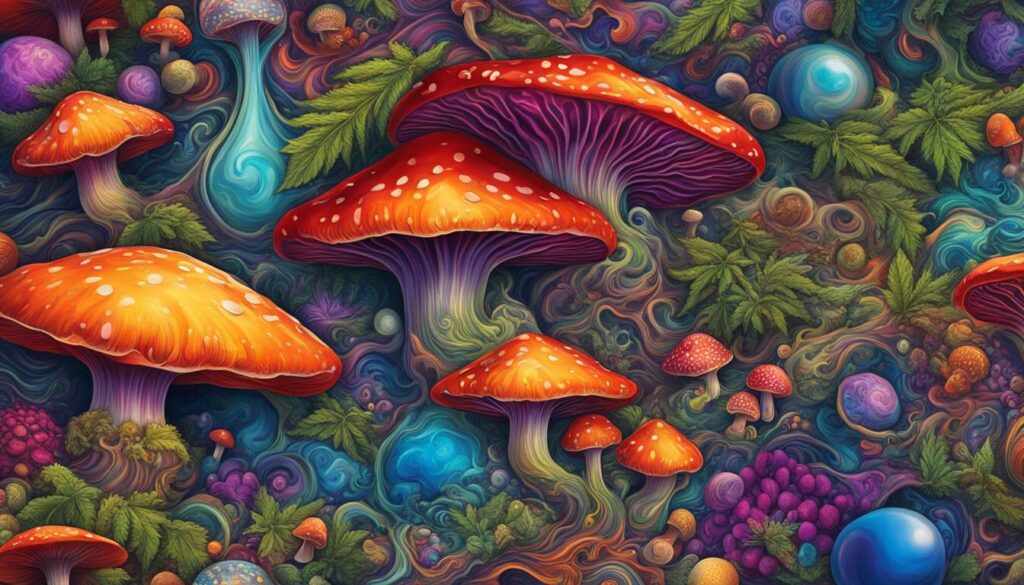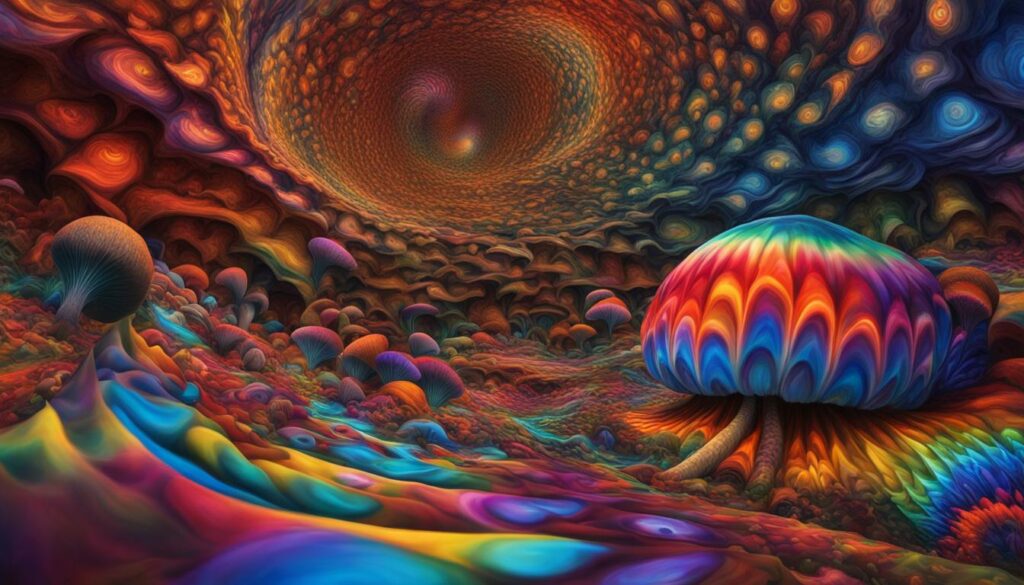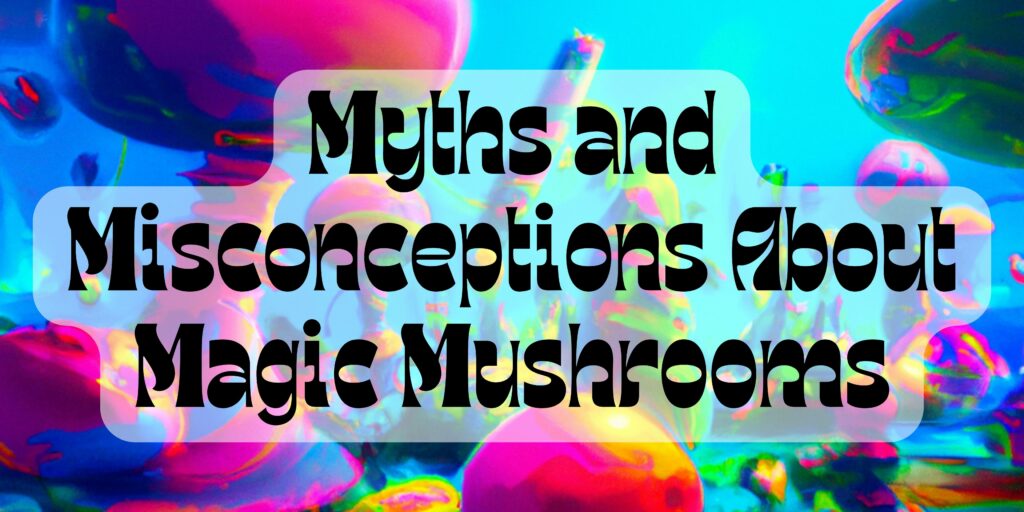Welcome to your comprehensive guide on understanding the trip length of shrooms! Whether you’re a seasoned user or new to the world of magic mushrooms, it’s essential to have a clear understanding of how long a shrooms trip can last. In this article, we will explore the factors that influence the duration of a shroom trip and provide you with valuable insights to ensure a safe and informed psychedelic journey.
Key Takeaways:
- The effects of shrooms can vary depending on factors such as individual, dosage, and setting.
- A shrooms trip typically begins within 20 to 60 minutes and can last up to six hours.
- Factors like dosage, frequency of use, metabolism, body mass, and hydration levels can affect trip duration.
- Urine tests are the most common method to detect psilocybin or its metabolites in the body.
- Approach shroom trips with caution and in a safe environment to minimize risks and potential side effects.
How Long Do Shrooms Stay in Your System?
Understanding how long shrooms stay in your system is essential for individuals who may be subject to drug testing or want to ensure the complete elimination of psilocybin and its metabolites from their body. While the effects of a shroom trip may last up to six hours, the detection time can vary depending on various factors.
The half-life of psilocin, the primary metabolite of psilocybin, is approximately 50 minutes. This means that it takes around five half-lives for psilocin to be completely eliminated from the body. Factors such as dosage, frequency of use, individual metabolism, body mass, and hydration levels can influence the detection window of psilocybin or its metabolites in drug tests.
Various drug testing methods can be used to detect psilocybin or its metabolites in the body, including urine, blood, saliva, and hair tests. Each test has a different window of detection, with urine tests being the most common. The detection window for psilocybin in urine tests can range from a few days to up to a week, depending on the factors mentioned above.
| Drug Test Method | Window of Detection |
|---|---|
| Urine Test | A few days to a week |
| Blood Test | A few hours to a few days |
| Saliva Test | A few hours to a few days |
| Hair Test | Up to 90 days |
It’s important to note that drug testing for psilocybin is not as common as testing for other substances. However, in certain situations such as employment screenings or legal matters, it’s crucial to be aware of the potential detection window and plan accordingly.
Risks and Side Effects of Shroom Trips
While shrooms are generally considered safe, it’s important to be aware of the potential risks and side effects associated with their use. Understanding these risks can help ensure a safe and informed psychedelic journey. Some of the potential risks and side effects of shroom trips include:
- Anxiety during the shroom trip: Shrooms can induce feelings of anxiety and paranoia, particularly in individuals who are prone to these conditions. It’s important to be in a calm and comfortable environment when consuming shrooms and to have a trusted trip sitter present to provide support and reassurance.
- Hallucinogen Persisting Perception Disorder (HPPD): This is a rare condition characterized by persistent visual disturbances, such as seeing flashes of light, halos around objects, or geometric patterns. HPPD can occur after using hallucinogenic substances, including shrooms, and its exact cause is still unknown.
- Distorted perception of reality: Shrooms can alter your perception of time, space, and reality. You may experience sensory distortions, such as seeing vibrant colors or hearing sounds differently. It’s important to be aware of these potential effects and be prepared for an altered state of consciousness.
- Flashbacks: Some individuals may experience flashbacks to previous shroom trips, even long after the effects have worn off. These flashbacks can be triggered by various stimuli and can be intense and disruptive. It’s essential to be mentally and emotionally prepared for the possibility of flashbacks.
- Accidents or injury: Shrooms can impair coordination, judgment, and reaction time, increasing the risk of accidents or injury. It’s crucial to avoid operating machinery, driving, or engaging in any potentially dangerous activities while under the influence of shrooms.
It’s important to approach shroom trips with caution and in a safe and controlled environment. If you have a history of mental health conditions or are currently taking medication, it’s advisable to consult with a healthcare professional before using shrooms. They can provide guidance and help determine if shrooms are safe for you.
“The effects of shrooms are unpredictable and can vary from person to person. It’s essential to educate yourself about the potential risks and side effects, and to approach shroom trips with respect and responsibility.” – Dr. Emily Johnson, Psychedelic Researcher
By being aware of the potential risks and side effects of shroom trips, you can make informed decisions and ensure a safe and positive psychedelic experience.
| Potential Risks and Side Effects | Precautions |
|---|---|
| Feeling anxious or paranoid | Create a calm and comfortable environment, have a trusted trip sitter present |
| Persistent visual disturbances (HPPD) | Monitor for symptoms and seek medical attention if necessary |
| Distorted perception of reality | Be mentally prepared for an altered state of consciousness |
| Flashbacks to previous trips | Be prepared for the possibility of flashbacks and seek support if needed |
| Increased risk of accidents or injury | Avoid engaging in potentially dangerous activities while under the influence |
Tips for Enhancing or Extending Shroom Trips
If you’re looking to enhance or extend your shroom trip, there are a few tips you can try. Here are some strategies to make the most out of your psychedelic experience:
1. Stay Hydrated:
Drinking plenty of water throughout your shroom trip can help support the natural detoxification process. Hydration is essential for maintaining overall well-being and can aid in the elimination of substances from your body.
2. Engage in Physical Activity:
Physical activity, such as walking or dancing, can stimulate your metabolism and promote the elimination of drugs from your system. It can also enhance the sensory experience and add a new dimension to your trip.
3. Consume a Balanced Diet:
Eating a balanced diet before and during your shroom trip can provide your body with the necessary nutrients to support its functions. Incorporate fruits, vegetables, and foods rich in antioxidants for a nourishing experience.
4. Practice Patience:
It’s important to be patient and allow your body to naturally process and clear the substances. Resist the urge to increase the dosage or frequency of use, as this can heighten the risks and potential adverse effects.
Following these tips can enhance your shroom trip and make it a more fulfilling experience. However, always remember to approach psychedelic substances with caution, respect, and in a safe environment. It’s crucial to prioritize your well-being and make informed decisions when exploring the world of shrooms.

Medical Benefits and Therapeutic Use of Shrooms
Psilocybin, the active compound in shrooms, has garnered significant attention in recent years for its potential medical benefits and therapeutic use. Clinical research studies have shown promising results in the treatment of various mental health conditions, including depression, anxiety, and addiction.
Research has indicated that psilocybin may have a profound impact on the brain, leading to improved mood, increased feelings of connectedness, and enhanced self-reflection. These effects, coupled with the hallucinogenic properties of shrooms, make it an intriguing candidate for spiritual or therapeutic purposes.
However, it’s crucial to note that the medical and therapeutic use of shrooms is still in its early stages of research and is not yet widely accepted or regulated. Further studies are needed to fully understand the potential benefits, risks, and appropriate usage guidelines.
The Potential of Psilocybin Research
Psilocybin research has shown promising results in clinical trials. One study conducted at Johns Hopkins University found that a single dose of psilocybin, combined with therapy, led to significant reductions in depression and anxiety in cancer patients, with effects lasting up to six months.
Another study at Imperial College London revealed that psilocybin-assisted therapy can help individuals overcome treatment-resistant depression. Participants experienced marked improvements in mood and a greater sense of well-being following psilocybin sessions.
These findings, along with many others, suggest that shrooms have the potential to revolutionize mental health treatment. However, it’s important to proceed with caution and ensure that further research and clinical trials are conducted to establish safe and effective protocols for psilocybin therapy.
| Medical Benefits of Shrooms | Therapeutic Use of Shrooms |
|---|---|
|
|
Mixing Shrooms with Other Substances
Mixing shrooms with other substances can have unpredictable and potentially dangerous effects. It is important to be aware of the risks involved and to exercise caution when considering combining shrooms with alcohol or prescription medications.
Shrooms, or magic mushrooms, already have potent psychoactive properties that can alter perception and cognition. Mixing them with substances like alcohol or certain medications can intensify these effects and potentially lead to adverse reactions. Alcohol is a depressant that can impair coordination and judgment, which can be amplified when combined with the hallucinogenic properties of shrooms.
Additionally, shrooms can have interactions with certain medications, such as antidepressants or antipsychotics, which can increase the risk of adverse effects or reduce the effectiveness of the medications. It is crucial to consult a medical professional if you are unsure about the interactions between shrooms and any other medication or substance you are currently taking.

Potential Dangers of Mixing Shrooms
“Combining shrooms with other substances can lead to unpredictable and potentially dangerous effects. It is always best to err on the side of caution and avoid mixing substances to ensure a safe and enjoyable psychedelic experience.”
Ultimately, the best course of action is to avoid mixing shrooms with other substances to ensure the safety of your psychedelic experience. If you are looking to explore the effects of shrooms in a responsible and controlled manner, it is recommended to consume them in a safe environment and without the influence of other substances. Psychedelic experiences can be profound and transformative, but they should be approached with caution and respect for the substances involved.
Table: Potential Interactions between Shrooms and Common Substances
| Substance | Potential Interactions |
|---|---|
| Alcohol | Intensified effects, impaired coordination and judgment |
| Prescription Medications | Varying interactions depending on the medication, increased risk of adverse effects or reduced medication effectiveness |
| Caffeine | Increased stimulation, potential for increased anxiety or restlessness |
Conclusion
Understanding the trip length of shrooms is crucial for having a safe and informed psychedelic journey. The effects of shrooms can last up to six hours, but there are factors that can influence this duration.
It’s important to approach shroom trips with caution and in a safe environment, being aware of the potential risks and side effects. If you’re looking to extend or enhance your shroom trip, follow the tips mentioned.
And remember, if you or someone you know is struggling with shroom abuse or addiction, seeking professional help is essential for a healthier path forward.
FAQ
How long does a shrooms trip last?
The effects of shrooms typically last up to six hours.
What factors can influence the duration of a shrooms trip?
Factors such as dosage, individual metabolism, body mass, and hydration levels can affect the duration of a shrooms trip.
How long do shrooms stay in your system?
Different drug tests have varying detection windows, but urine tests, which are the most common, can detect psilocybin or its metabolites for up to three days.
What are the risks and side effects of shroom trips?
Risks and side effects of shroom trips may include anxiety, paranoia, distorted perception of reality, flashbacks, and impaired coordination or judgment.
Are there any tips for enhancing or extending shroom trips?
To enhance or extend your shroom trip, try staying hydrated, engaging in physical activity, and consuming a balanced diet. However, increasing dosage or frequency of use can increase risks and potential adverse effects.
What are the medical benefits and therapeutic uses of shrooms?
Psilocybin, the active compound in shrooms, has shown promising results in the treatment of depression, anxiety, and addiction in clinical research settings. However, the medical and therapeutic use of shrooms is still being researched and is not yet widely accepted or regulated.
Can shrooms be mixed with other substances?
Mixing shrooms with other substances, including alcohol or prescription medication, can lead to unpredictable and potentially dangerous effects. It is best to avoid mixing substances to ensure the safety of your psychedelic experience.
Do long-lasting mushroom trips exist?
While the effects of shrooms can last up to six hours, there are no long-lasting mushroom trips. The duration of the trip depends on various factors and can be influenced by individual differences and external conditions.




